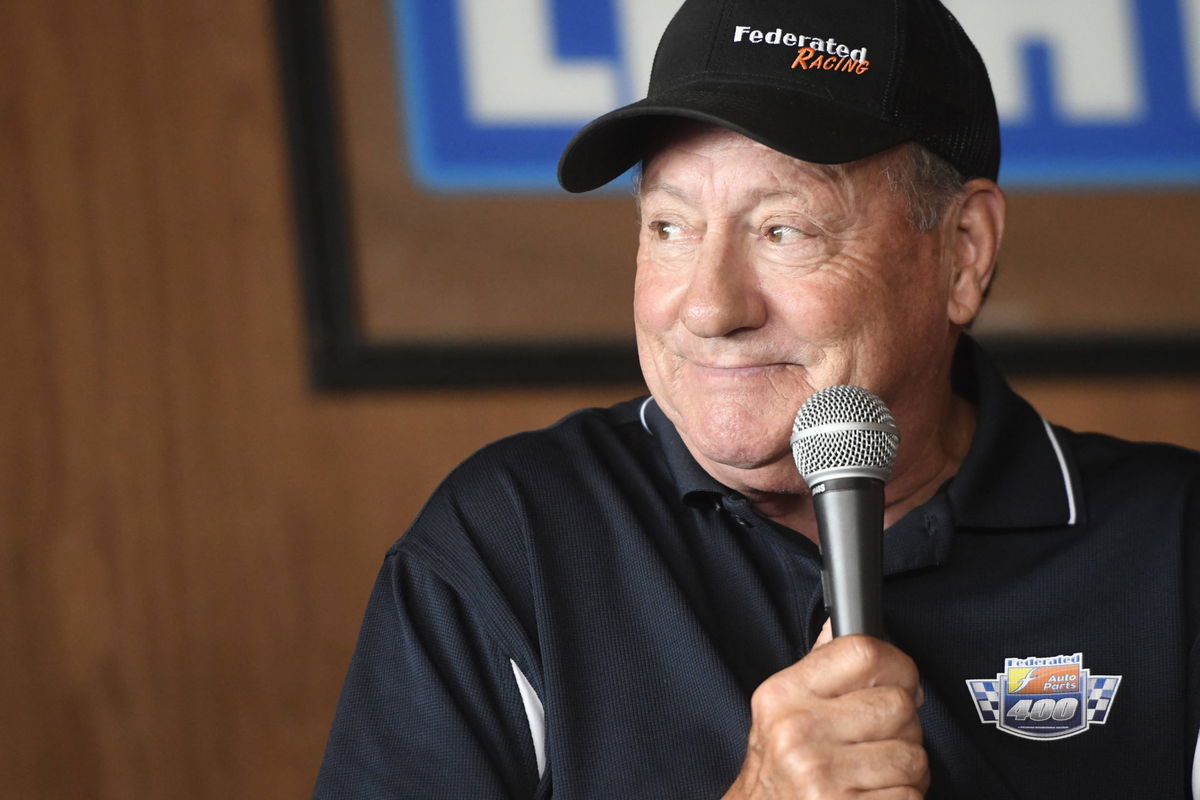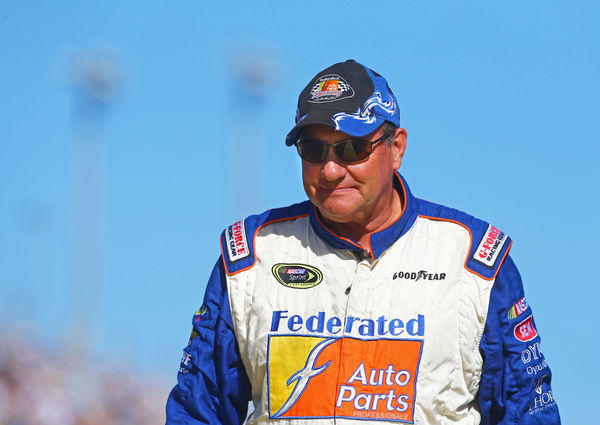
Imago
MADISON, IL – JUNE 02: Former NASCAR, Motorsport, USA driver Ken Schrader speaks during the Lunch with Legends for the NASCAR Cup Series Enjoy Illinois 300 on June 2, 2023, at Madison in World Wide Technology Raceway at Gateway, Illinois. Photo by Michael Allio/Icon Sportswire AUTO: JUN 02 NASCAR Cup Series Enjoy Illinois 300 EDITORIAL USE ONLY Icon116230602010300

Imago
MADISON, IL – JUNE 02: Former NASCAR, Motorsport, USA driver Ken Schrader speaks during the Lunch with Legends for the NASCAR Cup Series Enjoy Illinois 300 on June 2, 2023, at Madison in World Wide Technology Raceway at Gateway, Illinois. Photo by Michael Allio/Icon Sportswire AUTO: JUN 02 NASCAR Cup Series Enjoy Illinois 300 EDITORIAL USE ONLY Icon116230602010300
A ton of NASCAR stars learned how to really drive on dirt: Kyle Larson sliding sprint cars in California, Austin Dillon banging doors in late models, all before they ever touched a Cup car. That loose-surface school teaches you how to feel a car, how to stay on the gas when everything wants to spin. Ken Schrader did the exact opposite.
Watch What’s Trending Now!
He spent decades at the top of NASCAR and then, when most guys hang up the helmet, he went right back to the dirt tracks he never really left. In 2013, he told everyone he was stepping away from Cup racing, then immediately added, “It’s not retirement, just no plans to come back.” Now, he finally explained why it never felt like walking away.
ADVERTISEMENT
Schrader explains why NASCAR stopped feeling like home
On the Herm & Schrader podcast, Schrader, sitting with Kenny Wallace, looked back at juggling Cup weekends with dirt cars and Silver Crown rides.
“I ran my dirt car all the time and ran some Silver Crown stuff while I was still running NASCAR, but it was different than it was, a lot different,” he said.
Back then, you could finish Sunday at Talladega, hop a plane, and race a modified Wednesday night. Nobody blinked. Today, that would get you a lecture from sponsors and insurance people.
ADVERTISEMENT
Ken Schrader pointed out that the money changed everything.
“Guys weren’t making what they make now, and it just wasn’t as much at risk. I mean, it was a lot, but nothing like it is now.”
ADVERTISEMENT
With time, the contracts got huge, schedules got packed, and suddenly, racing anything outside the Cup bubble became a liability instead of a passion.
Kenny Wallace chimed in, remembering how Schrader always had a late model or his famous Budweiser No. 25 ready to go.
“You didn’t run an open-wheel car every week. You were in your late model or your AC Delco.”
ADVERTISEMENT
Schrader never wanted to choose one world over the other, but NASCAR slowly made that choice for him.

Imago
NASCAR, Motorsport, USA Ford EcoBoost 400 Nov 17, 2013 Homestead, FL, USA NASCAR Sprint Cup Series driver Ken Schrader during the Ford EcoBoost 400 at Homestead-Miami Speedway. Homestead FL USA, EDITORIAL USE ONLY PUBLICATIONxINxGERxSUIxAUTxONLY Copyright: xMarkxJ.xRebilasx 8846714
For Schrader, racing was never just the paycheck or the spotlight. It was sliding into a local track, smelling the clay, and banging fenders with buddies. When the Cup side started feeling more like a corporation than a racetrack, the dirt side still felt like home.
ADVERTISEMENT
So when he stepped out of full-time NASCAR, he didn’t retire; he just went where the fun still lived. That same easygoing love for the sport is exactly what Kenny Wallace worries is slipping away now.
Kenny Wallace sounds the alarm
While Schrader was talking about the old days, Wallace went on social media and called this moment “a dark day for NASCAR.” Phones are blowing up from people inside the garage who are scared about what comes next, all because of the big antitrust lawsuit heading to court on December 1.
Wallace laid it out plain that Jim France and family built something incredible, the kind of tough leadership that kept everyone in line and moving forward. “Those days are gone,” he said. Big Bill, Bill Jr., and Mike Helton, the men who scared the hell out of you and made the sport work, aren’t calling the shots anymore.
Today it’s billion-dollar TV deals and corporate boards.
“NASCAR has got so big that it has outgrown them,” Wallace said.
He pointed at Formula 1 owned by Liberty Media, Fox owning part of IndyCar, and asked the question nobody wants to ask: has NASCAR gotten too big for one family to run?
He hates even saying it because he loves the France family and everything they built, but the fear is real. If the judge rules against NASCAR and calls it monopolistic, everything could split apart. Tracks, teams, TV rights, nobody knows what that looks like. Schrader quietly walked away when the sport stopped feeling like racing.
Wallace is warning that without big changes, a lot more people might have to do the same. From Schrader choosing dirt over corporate life to Wallace begging the sport to remember where it came from, both stories come from the same place: loving racing more than the business it became.
ADVERTISEMENT
ADVERTISEMENT
ADVERTISEMENT

